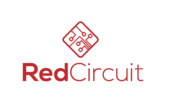
Every business needs a strong digital marketing strategy to help grow and drive the success of their business over time.
Learn what it takes to build a strong digital marketing strategy using the following steps.
Identify your top business goals
The first to creating any strategy and plan is to first, determine why you’re doing it to begin with. Start by asking what you’d like to accomplish through digital marketing and why? Are you looking to grow your sales pipeline, generate more leads, and revenue? Or do you want to get the word out that your brand exists and begin to create a community of brand advocates? Whatever the goals are, they must be clearly defined and understood before you take any additional steps in the process. Otherwise, you can waste a lot of time and money on misguided tasks and trying to drive unattainable results.
You are likely familiar with the best practices of goal-setting. Goals must be specific, measurable, attainable, relevant, and time-bound. If the goals that you set don’t meet any one of these criteria, you have to reevaluate them.
Define Your Target Audience
It’s important to have a clear picture of your target audience and prospective customers or clients. You’re going to have to craft a message specifically for them in order to peak their interest and get them to engage with your brand. People are looking for personalization these days and the first step towards that is understanding who they are. Research your audience by asking:
– Who are they?
– What do they do?
– What are they passionate about?
– What do they need?
– Where do they spend their time online?
– What social networks do they use the most?
Asking these questions will help you define your audience and provide clarity on what you need to do to reach them.
Evaluate Your Current Digital Marketing Efforts
Before you make any plans and spending anymore money in your digital marketing efforts, evaluate what is and what is not working for you now. Is your website getting a good amount of traffic, but not enough leads or conversions? Do you utilize your social media platforms to share rich and valuable content or is it all self-serving and promotional, providing no value to your community?
First, write down all of the things that you are doing well. Be specific so that you can find ways to build upon your current successes.
Next, write down all of the things that are not working. It is important to be specific here as well because this will help you identify the key things that need improvement or show you where you’re wasting time that could be used on more valuable tasks. Evaluating your current digital marketing efforts and performance will also help you set benchmarks for success.
Complete a Competitive Analysis
Aside from evaluating your own digital marketing efforts, you should also conduct a competitive analysis to see how you compare to the other businesses also targeting your core audiences. Identifying their strengths and weaknesses will help you see opportunities and voids that need to be filled.
It is necessary to note that completing a competitive analysis and gathering this information is not solely for the purpose of designing a mirroring strategy to your competitors. While you will certainly want to level the playing field, there will be inevitable differences that should remain as they are. The competitive analysis should help you differentiate your brand and unique selling points from your competitors. Learn what they’re doing, adopt what’s useful, but strive to create distinction.
Create Your Core Message
After establishing your goals, identifying your target audience, evaluating you and your competitors’ current digital standing, then it’s time to work on your key message. This is a crucial step so take your time and really decide what you want to communicate with your audience in order to get to your goal.
Your core message should create value for your audience, provide solutions to their needs, and tie in your brand, product, or service. Think again about what your audience needs, the solution you have to meet the need, and what you can do to get them to act in a way that ultimately helps you meet your goal. What are the value propositions and how can you communicate them to your audience? A few key questions to ask when crafting your message are:
– Is it clear?
– Is it targeted?
– Does it add value?
– Does it encourage action?
– Is it unique and creative?
– Is it sticky or memorable?
After you’ve identified the key points, you then work on different ways to communicate them consistently across each channel that you choose to use. It is ideal to have short and long tail versions of your message to use for specific channels. For example, with social media, keep it brief and concise. For blogging on your website, you can be a bit more detailed.
Determine the channels
There are several digital marketing channels available to brands today that make it possible to reach your core audience and drive sales. Some of the top channels include:
– Website – Providing valuable information through your content-rich website
– Email – Sending communication directly to your audience’s inboxes
– Social Media – Engage through Facebook, Twitter, Pinterest, Instagram, Google+
– Search Engine Optimization – Driving traffic to your website through relevant content themes and SEO strategy
– Paid Search/Search Engine Marketing – Advertising on search engines like Google, Bing, Yahoo
– Product Listing Ads – Ideal for online retailers to advertise products through search engines and
– Display/Retargeting – Banner advertising displayed to prospects based on their online behavior or through distribution networks
– Affiliate – Marketing your products through commission-based platforms such as deal/coupon sites
– Content Syndication – Distribute your website’s valuable content through third party publishers to drive more traffic and potential leads
– Local Search – Top priority for Brick-and-Mortar businesses where customers visit their physical location to buy products or get services
– Mobile – Although all encompassing of the before mentioned channels, think mobile first. It’s one of the top digital trends follow in 2016
Though these are the top digital marketing platforms among many others out there, don’t feel obligated to dive and invest your time and money into all of them. Prioritize and research the ones that would be more effective for driving sales, awareness, and engagement for your brand. Keep in mind that each channel can support different parts of your goals instead of the whole goal or every goal that you’ve set. Your email strategy can differ from your social media strategy while both help to support an overarching goal.
Set a Budget
One misconception about marketing is that it is expensive and a campaign must have tens of thousands of dollars in spend in order to be successful. This couldn’t be further than the truth. While you don’t need to overspend, it is recommended that you set a reasonable budget to support your most critical initiatives. Don’t be afraid to test your budget in different channels to see what’s most effective and drives the higher ROI.
For example, a brand that’s active on Facebook and wants to reach a larger audience can spend less than $20 a week and reach thousands of people within their target audience. Review all of the channels and set a budget for each. Don’t forget, however, that there are some actions you can take that are totally free. Explore those and incorporate them into your plan as well.
If you’re like most small businesses, it may be hard to find time to do digital marketing in-house so you’d need to hire a firm of experienced professionals to assist. In that case, you would need to expand your budget to account for labor, expertise, and the funds it takes to market on each platform.
Devise a complete plan
Your goals are set, audience is identified, the message is clear, channels are chosen, and the budget is set. All of the actions previously covered lead up to the development of your plan. Without a plan, everything else is just good information to have. Now’s the time to take all the work that you’ve done and put it into an actionable plan.
- Prioritize your actions by determining what tasks you can complete to drive the best results in quickest amount of time.
- If you’re creating a plan for the year, break it up into quarters and set milestones for each quarter. This will guide you in understanding what you would need to do monthly, weekly, and daily.
- If you start at a high-level, you can then create the small goals that you would need to take to meet each milestone.
As a note, you do not have to plan your daily tasks for the entire year so far out in advance. That can be overwhelming and lead to delay and inaction. Start with one or two quarters first, setting the goals for each, then set the goals for the month, then the goals for each week in that month. Make room for flexibility within your plan. There are lots of unexpected and external or internal issues that can have an impact on your resources such as time, budget, human capital and more. Don’t use this as an excuse to slack off, however, if there’s no legitimate reason for not getting things done.
If you’re a business owner in need of assistance with developing your strategy or executing your plan, contact RedCircuit and consult with our experienced professionals.




